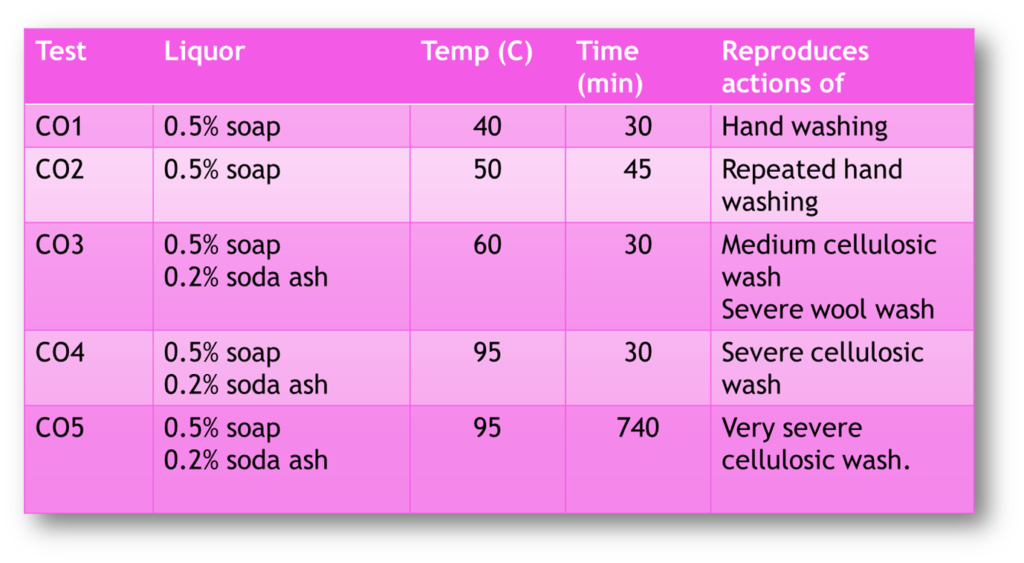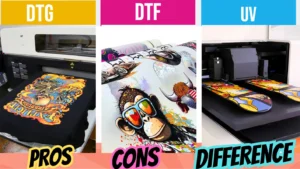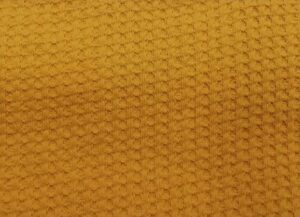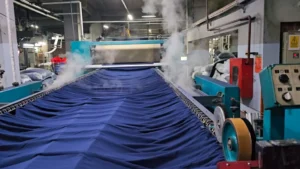Washing Fastness:
Washing fastness refers the ability of a dyed fabric to retain its original shade against fade during washing. The washing fastness test examines the color fastness of all kind of textile materials after the washing procedure. Consumers launder their fabric at some time in the lifespan of the textile. Change of color or staining of another garment during laundering is generally immediately evident to the consumer and has a high impact on consumer satisfaction.

The First Five ISO Washing Fastness Test Conditions:

Factors Affecting washing fastness:
1. Temperature:
- The test temperature significantly influences the results of a wash fastness test.
- Firstly, when end-use fabrics require low-temperature washing, we use lower test temperatures. For example, delicate fabrics like wool, silk, and viscose typically undergo low-temperature washing. Consequently, low test temperatures limit dye migration from the fabric surface, resulting in minimal staining on adjacent fabrics. At low temperatures, less energy is available for dye attachment and penetration into nearby fibers.
- Conversely, for fabrics that will likely endure warm or hot washing during their lifetime, we should use higher test temperatures. Higher temperatures provide the necessary energy to swell fibers and facilitate dye migration. As a result, adjacent fabrics are more susceptible to staining from any free dyes present in the wash liquor.
2. Agitation Time:
- The agitation time of a laundering test can significantly affect the test results.
- Short test times limit the dissolution of unfixed or poorly fixed dye into the liquid or onto the adjacent fabric. The dye has more time to escape from the fiber and to migrate onto the adjacent fabric in longer tests.
- Longer test times can allow the dye to deposit on and migrate into the fibers of adjacent fabrics following a mechanism similar to dyeing, leading to an increase in the level of staining.
Apparatus And Consumables:
1. Washing Fastness test device:
Stainless steel containers:
- Capacity: Approximately (550 ± 50) ml vessels.
- Rotating Speed: Approximately (40 ± 2) RPM.
- Constant temperature in a wash wheel.
2. Stainless steel balls:
- Stainless steel balls (non-corrodible) with approximately 6 millimeters in diameter.
- Tests require the addition of stainless steel balls to the wash liquor to increase the severity of the test.

3. Testing fabrics:
Adjacent Fabrics:
Assess cross-staining of a third-party fabric by fixing an adjacent fabric to the fabric test sample. Adjacent fabrics come in many types and many forms, including single-component woven fabrics and multifiber woven fabrics.
Single Component Adjacent Fabrics:
The single-component adjacent fabrics commonly used are cotton, wool, polyamide, acrylic, viscose rayon, polypropylene and polyester. It should be plain weave, medium mass per unit area and free from dyes or fluorescent whitening agents. Test involving single-component adjacent fabrics have the adjacent fabric fixed to one or both sides of the fabric test sample. Sometimes, laboratory experts use a different adjacent fabric composition on each side to show staining on two fabric types Commonly, tests use Nylon 6.6 because it scavenges free dyestuff from the wash liquor more effectively than any other fabric composition.
Generally two single fiber adjacent fabric is attached to specimen. The first of fabric shall be of the same kind of fiber as the material under test and the second shall be that indicated or as otherwise stated.
| In case of first piece | In case of second piece |
| Cotton | Wool |
| Wool | Cotton |
| Silk | Cotton |
| Linen | Cotton |
| Viscose | Wool |
| Acetate | Viscose |
| Polyamide | Wool or Viscose |
| Polyester | Wool or Cotton |
| Acrylic | Wool or Cotton |
Multi-Component Or Multifiber Adjacent Fabrics:
Multifiber adjacent fabrics allow staining exposure to a range of different fabric types during one test. It consists of yarns from various generic types of fibers, with each forming a strip of specified width to ensure even thickness of the fabric. The most common supplier of multifiber fabric is the Society of Dyers and Colorists (SDC). The SDC produces two multifiber fabrics: one contains wool and one does not in the following table-

Non- Dyeable Fabric: Necessary if required.
4. grey scales for assessment:
Different types of grey scales rate the assessment results of washing fastness.
1. Color Change Grey Scale: Complying with ISO 105-A02
2. Staining Grey Scale: Complying with ISO 105-A03
5. magnetic heater
6. precision balance
7. Chemical Reagents:
1. Detergent: ECE reference detergent that contains no optical brightener.
2. Sodium carbonate: If required.
3. Sodium hypochlorite or lithium hypochlorite: If required.
4. Sodium perborate tetrahydrates: If required.
5. Water: Grade 3 (distilled or deionized water)
6. Acetic acid solution: 0.2 gm of glacial acetic acid per liter for souring treatment, if required.
Sample preparation:
1. Fabric test specimen:
- To prepare the test sample, mark it with a template measuring 40 mm by 100 mm, positioned 15 mm away from the selvedges if the sample is fabric.
- Prepare a multifiber adjacent fabric of the same dimensions, 40 mm by 100 mm.
- Next, sew the test sample and the prepared multifiber adjacent fabric together face to face along their short edges.
- This method prepares the fabric specimen for testing.
2. Yarn test specimen:
- When the test sample consists of yarn, position the 40 mm by 100 mm yarn between the multifiber adjacent fabric and the undyeable fabric, and sew them together along all four edges.
- This preparation ensures that the test samples are ready for testing.
Washing fastness test procedure:
- First, weigh one liter of pure water and 4 gm of detergent for use in the detergent solution.
- The watch glass is for the weighing process and then calibrate the precision balance.
- The detergent is ECE reference detergent containing no optical brightener.
- After reading 4 gm on the screen, pour the detergent into a clean beaker.
- Then measure 1 liter of pure water with the graduated cylinder and pour over the detergent.
- Heat or add hot water to dissolve the detergent solution.
- After dissolving the detergent, measure the temperature of the solution.
- After reaching 400 centigrade, begin the test.
- When the prepared washing solution is at 400 centigrade, put the test sample into the steel containers.
- Ten pieces of steel balls put into the container.
- Measure the require amount of test solution at 150 ml with a graduated cylinder and then pour into the container.
- After that close the lid and place in a pre-heated device at 400 centigrade.
- Press the start button to begin the test. This time test the sample for 30 minutes in the device.
- Remove the washing fastness sample from the container and then discharge the excess water.
- Put the sample in the beaker to wash off.
- Pure water heated to 400 centigrade is use to wash off the sample with 100 ml of pure water at one minute intervals. At the second wash off, mix the sample again with 100 ml of pure water for one minute.
- Lastly filter the water. Along one of the short sides, dry the test sample in the oven at 600 centigrade.

Evaluation of washing fastness test:
- The evaluation of washing fastness test requires grey scales.
- The original sample is put on the left side and the tested sample is put on the right side. The staining is evaluated with the greyscale. The greyscale which has levels from 1 to 5 is placed on the tested sample and the appropriate level is found. Then the test sample is evaluated.
- The tested sample and original sample are put side by side and the fading scale is used. the scale is rated from one to five. The evaluation of the sample is finished by finding the appropriate value.

Description of The Normal Fastness Grades:

References:
- Principles of Textile Testing by J E Booth.
- Handbook of Textile Testing and Quality Control by E. B. Grover, Elliot Brown Grover, Dame Scott Hamby.
- Society of Dyers and Colorists(SDC)
- American Association of Textile Chemists and Colorists(AATCC)
- International Organization for Standardization(ISO)
To learn more on Laboratory testing and accreditation you can check on the following article:
- Testing Of Textiles: Why Is It Important For The Textile And Apparel Industries?
- Fabric Abrasion Resistance: Martindale Abrasion Testing Process
- Fabric Hand feel evaluation by Fabric Touch Tester (FTT)
- ISO/IEC 17025 Laboratory Accreditation Process
- ISO/IEC 17025 Laboratory Accreditation Advantages
- KEY STEPS FOR CONDUCTING AN EFFECTIVE QMS INTERNAL AUDIT




